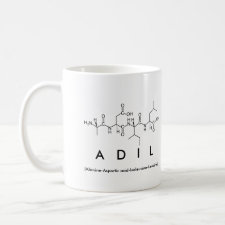
Authors: Ünlüer Ö, Ersöz A, Denizli A, Demirel R, Say R
Article Title: Separation and purification of hyaluronic acid by embedded glucuronic acid imprinted polymers into cryogel.
Publication date: 2013
Journal: Journal of Chromatography B
Volume: 934
Page numbers: 46-52.
DOI: 10.1016/j.jchromb.2013.06.022
Alternative URL: http://www.sciencedirect.com/science/article/pii/S157002321300336X
Abstract: Hyaluronic acid (HA) has been used in many applications such as pharmaceutical, clinical and cosmetics, so its separation and purification is very important. In this study, firstly d-glucuronic acid imprinted polymers (MIPs) have been synthesized for the separation of HA which has glucuronic acid part in its structure. MIP particles have characterized by elemental analysis, Fourier Transform Infrared Spectroscopy (FT-IR) and swelling tests. Then, synthesized MIP particles have embedded into polyacrylamide based cryogel. Cryogel has prepared by free radical cryogelation process initiated by N,N,N',N'-Tetramethylethylenediamine (TEMED) and ammonium persulfate (APS) as redox initiators. This cryogel material was characterized by FT-IR, swelling tests, scanning electron microscopy (SEM) and surface adsorption analyze including pore size analyzer (BET) method. The adsorption of HA has investigated by spectrophotometric method using MIPs embedded into cryogel columns (GAIPEC) and the maximum HA adsorption capacity was found to be 318 mgg-1. The selectivity of GAIPEC column has estimated using N-acetylglucose amine as interfering agent since this molecule is a part of HA and the results have shown that GAIPEC has been nearly 35 times selective for HA than N-acetylglucose amine. The optimum chromatographic conditions for separation of HA were investigated. pH 7.0 buffer solution for elution and 0.1 M of NaCl solution as desorption agent were used at 0.5 mL min-1 flow rate. Also, recovery of GAIPEC was investigated and the results have shown that GAIPEC could be used many times without decreasing its adsorption capacity significantly. Here in, combining selectivity of MIP particles and mechanical properties of cryogel, a rigid and stable material was prepared for the separation and purification of HA. To point out this, HA has been isolated from fish eye and fermentation of Streptococcus equi RSKK 679 cell culture. After that, it has characterized and Fast Protein Liquid Chromatography (FPLC) applications have been investigated
Template and target information: hyaluronic acid, HA
Author keywords: Cryogel, d-Glucuronic acid, FPLC, Hyaluronic acid, Molecularly imprinted polymers



Join the Society for Molecular Imprinting

New items RSS feed
Sign-up for e-mail updates:
Choose between receiving an occasional newsletter or more frequent e-mail alerts.
Click here to go to the sign-up page.
Is your name elemental or peptidic? Enter your name and find out by clicking either of the buttons below!
Other products you may like:
 MIPdatabase
MIPdatabase









